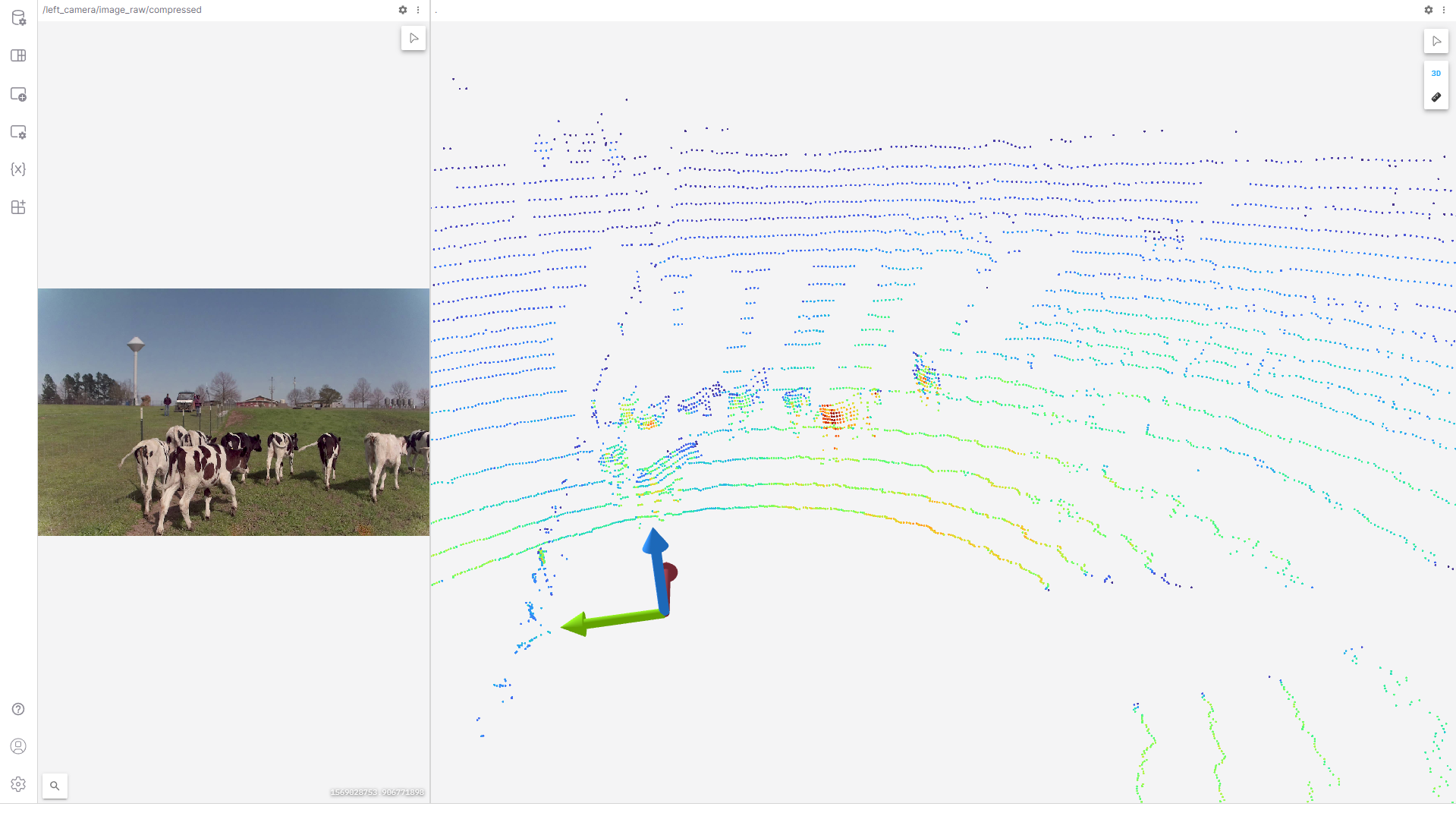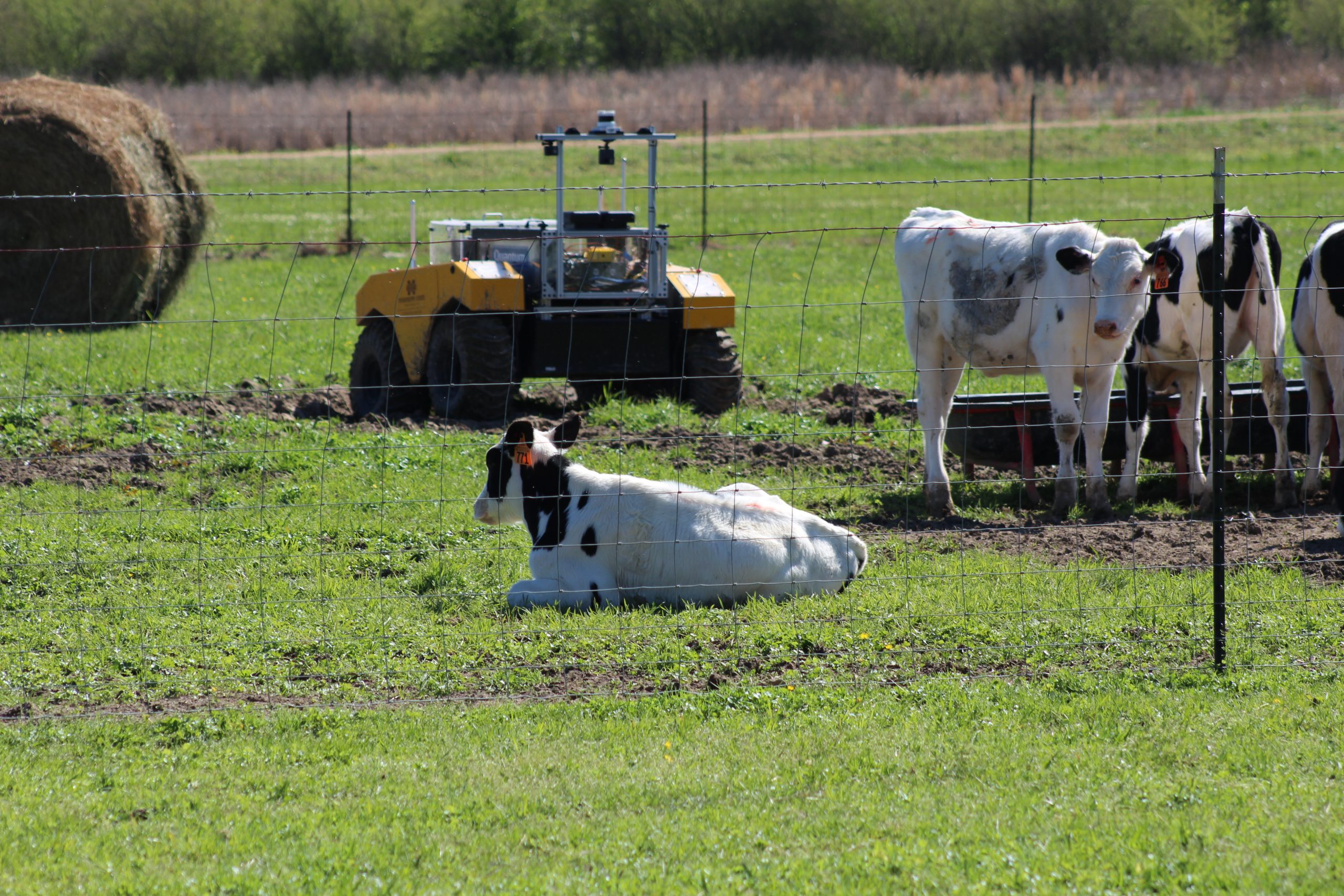The livestock sector plays a significant role in improving efficiency in agriculture as well as furthering economic development, making it a vital industry. The mobility and management of livestock can be a labor-intensive, time consuming practice. In addition, human-animal interaction in such environments may cause injury to laborers and technicians during animal movement events.
Traditional Livestock Management
Moving livestock requires skilled laborers that are familiar with livestock behavior. This can be difficult to find in some areas especially with high labor turnover in the livestock industry. Cattle are not always easy to move and can occasionally be unresponsive. Unskilled labor may inadvertently cause stress on animals affecting their overall wellbeing and productivity. There are also safety concerns that need to be considered. Depending on the size and location of the pasture, the terrain in which animals must traverse can be challenging for humans, ultimately leading to a decline in productivity.
To address these concerns, a Mississippi State University team is investigating the feasibility of using unmanned ground vehicles for autonomously herding and driving cattle. The use of automated herding systems could decrease labor demand for these tasks and improve workflow efficiency in other areas of operation. The project is a combined effort of the Center for Advanced Vehicular Systems, Department of Animal and Dairy Sciences and the Raspet Flight Lab.
Their research is multifaceted, aiming to capture the natural behavior of cattle, generate computer models of movement patterns to understand herd dynamics and develop autonomous behaviors for herding cattle. Their end goal is to provide algorithms that can be used for autonomous movement of animals with little to no human interference.
Moving Towards Automated Livestock Management
To explore this new method of livestock management, a robust and adaptable vehicle was required to navigate the pasture. The teams chose Warthog UGV as a base vehicle platform to remotely herd cattle in the pasture. Warthog was chosen because of its ability to operate in rough terrain and harsh weather conditions.
Warthog was mainly utilized to carry the sensor payload needed to navigate the pasture and to entice the cattle to move in the desired direction.

The teams equipped the Warthog with two Sekonix HD GSML cameras for onboard video capture as well as SwiftNav GPS and an IMU sensor for tracking and navigation. In addition, a 64-beam Ouster LiDAR was added to collect LiDAR data of herd behavior while being moved with the Warthog. Sensor data was processed in real-time by an Nvidia Drive AGX Pegasus and stored on a 17TB Quantum R3000 storage system. The Pegasus was the teams’ main computing system with two Nvidia Xavier system-on-a-chip and two Turing GPUs.

Point Cloud Data Captured While Herding Cattle
The team plans to leverage the recorded natural behavior of cattle and generate computer models of their movement patterns to understand herd dynamics and develop autonomous behaviors to safely and effectively herd cattle.
“Animal safety and health are our top priorities,” said Dr. Marcus McGee, assistant clinical professor in the MSU Department of Animal and Dairy Sciences and a scientist in the Mississippi Agricultural and Forestry Experiment Station. “We chose to run this trial with dairy cattle as they are more accustomed to human interactions. While we monitored how the animals moved with the UGV, we also wanted to observe the animals to determine if they were stressed by the ground vehicle.”
Warthog: The Robotic Herder

The preliminary study shows positive results with Warthog and its ability to remotely herd cattle. This provides an encouraging proof of concept for unmanned ground vehicles to be utilized for herding livestock autonomously.
“We were extremely pleased with the observable outcomes of the study. We have seen that the herd responds well to being moved by the Warthog,” said Dr. Christopher Hudson, Research Engineer, Center for Advanced Vehicular Systems, Mississippi State University.
Watch this video of Warthog herding cattle autonomously:
Future of Animal Husbandry and Autonomous Herding Systems
The research study has the potential to provide valuable insights on interactions between animals and robots. This knowledge can carry future research and development in the field of robotics and livestock management, leading to more effective methods of managing livestock.
There is a wealth of data currently being collected from ongoing trials. The team aims to develop algorithms for safe and reliable autonomous movement of livestock. This will help establish a set of guidelines that producers can follow to adopt robotics and AI in both small and large-scale operations. By gathering extensive amounts of data and developing intervention methodologies for individual animals, the team plans to create a customizable dataset that can be used for various livestock operations.
“We are excited to get preliminary data on the use of autonomous vehicles to herd livestock and use this data to develop guidelines for our producers,” McGee said. “One of the benefits of this system is the ability for the robot to alert producers if cattle are injured or there appears to be a health issue. While humans can’t be removed from herding and management of livestock, the robot can ease some of the repetitive workload and inform producers of potential problems.”
The team members involved in this project consist of Dr. Christopher Hudson, Research Engineer; Dr. Marcus McGee, Assistant Clinical Professor; Dr. Daniel Carruth, Associate Director; Sean Meacham, UAS Operations Technician, Aviation Safety Officer
If you would like to learn more about the Center for Advanced Vehicular Systems, you can visit their website here.
If you would like to learn more about the Department of Animal and Dairy Sciences, you can visit their website here.
If you would to learn more about the Raspet Flight Lab, you can visit their website here.
If you would like to more about Warthog, you can visit our website here.

